We live in an age and a culture that places little value on the past. An increasingly transient population comes and goes, with few of us living in the places where we were born or expect to end our lives. There is little sense of the community that will remain when we have raised our families and moved on to Florida, or perhaps Cape Cod. Until the 20th Century, however, New England communities were bound not just by common residency but by generations of kinship and marriage. While perhaps inevitable given an increasing population density, the results of this trend are culturally and aesthetically discouraging. Each year Dover loses an old house or two that defined the landscape of our community, with the buyers for the most part subdividing the land into the largest possible number of lots and filling them with soulless outsized boxes. When an interested homeowner asks about the history of one of our few surviving pre-Revolutionary houses, it is worth taking a closer look at the property’s history.
Dover’s onetime town historian, Frank Smith, wrote in 1914 that the house at 202 Dedham Street was built by Ebenezer Richards, Jr. in 1769.1 It is likely that he acquired the property somewhat earlier by inheritance, as the land was a portion of his great-great-grandfather, Edward Richards’ (1610-1684) extensive holdings. It was inherited by Edward’s son Nathaniel (1649-1725) and later his grandson James (1683-1760). On 13 February 1751, James Richards sold to his son Ebenezer Richards, Sr. for 93 pounds, six shillings, and eight pence:
…the one half part of a certain tract or parcel of land part thereof being upland part meadow and part swamp situate lying and being within the Township of Dedham aforesaid being butted and bounded toward the south in part, on the lands of Jeremiah Fisher, Esq.: Westerly upon the brook running between this tract of land and the land belonging to Nathaniel Richards lately deceased, Northerly on Charles River so called, and on all other parts on the lands of Hezekiah Fuller, or however otherwise bounded or reputed to be bounded, together with all and singular the timber trees woods and underwoods standing and growing thereon, ways easements profits privileges rights commodities hereditaments emoluments and appurces [appurtenances] whatsoever thereunto belonging or in any wise appertaining, and the reversion and reversions remainder and remainders thereof.2
This was a sale as opposed to a bequest. The brook referenced is almost certainly Noanet Brook.
The farm was settled by Ebenezer Richards, Jr. probably around the time of his marriage to Hannah Wiswall of Newton in 1769. Born in Dedham on 16 July 1744, Richards was the second child and oldest son of Ebenezer Richards Sr. (1718-1799) and Thankful Stratton. Frank Smith tells us that Ebenezer and Thankful Richards lived on the Edward Richards estate, known as “Broad Oaks” which was located off West Street (Route 135) near Burgess Road and the Needham town line.3 In 1769 there were few houses along Dedham Street, possibly only the Ralph Day house (236 Dedham Street) at the foot of Strawberry Hill. The John Day house, now 216 Dedham Street, would not be built until 1786. What is now Strawberry Hill Street was populated largely by other members of the extended (and extensive) Richards family.
On 19 April 1775, 31-year-old Corporal Ebenezer Richards marched to Lexington and Concord with Captain Ebenezer Battelle’s company of Minute Men, engaging the British at Menotomy (now Arlington) and serving a total of four days. The muster roll of Captain Battelle’s company included six members of the extended Richards family. Three more would serve under Captain Battelle over the course of the War. Two of Battelle’s children would marry members of the Richards family. Both Ebenezer Richards and Ebenezer Battelle also served with Captain Aaron Guild’s company of Minute Men at the Battle of Bunker Hill on 17 June 1775. Corporal (later Sergeant) Ebenezer Richards’ subsequent military service included six days spent taking and fortifying Dorchester Heights in March of 1776, and thirteen days spent in Roxbury in March and April of 1778.
Sergeant Ebenezer Richards died in Dover on 11 August 1784 at the young age of 40. The Revolutionary War had been over for less than a year, and the Town Clerk recorded his death with the notation that it was the first since the Town had been incorporated. He was buried in Highland Cemetery, presumably beside his wife Hannah who died in 1787, but the location of their graves is lost to time. In 1911 the Town erected a cluster of marble headstones honoring those Revolutionary War veterans known to be buried in Highland Cemetery whose graves were unmarked. These are merely memorial stones and have no relationship to the veterans’ actual resting places.
With Ebenezer Richards’ death, the property passed to his son Ebenezer Richards III (1770-1834). The third Ebenezer settled in Brookline, where he operated a tavern and hotel near the intersection of Hammond and Heath Streets. On 31 March 1792, he sold the Dover farm to Abigail Richards, wife of his father’s brother William.4 Abigail Richards, in turn, bequeathed the farm to her nephew, William Richards II, whom she and her husband had taken in at a young age. Ownership passed out of the Richards family on 21 Dec 1836 when William sold the property to Henry Bodge, housewright of Boston. At the time it encompassed 53 acres on both sides of Dedham Street.5
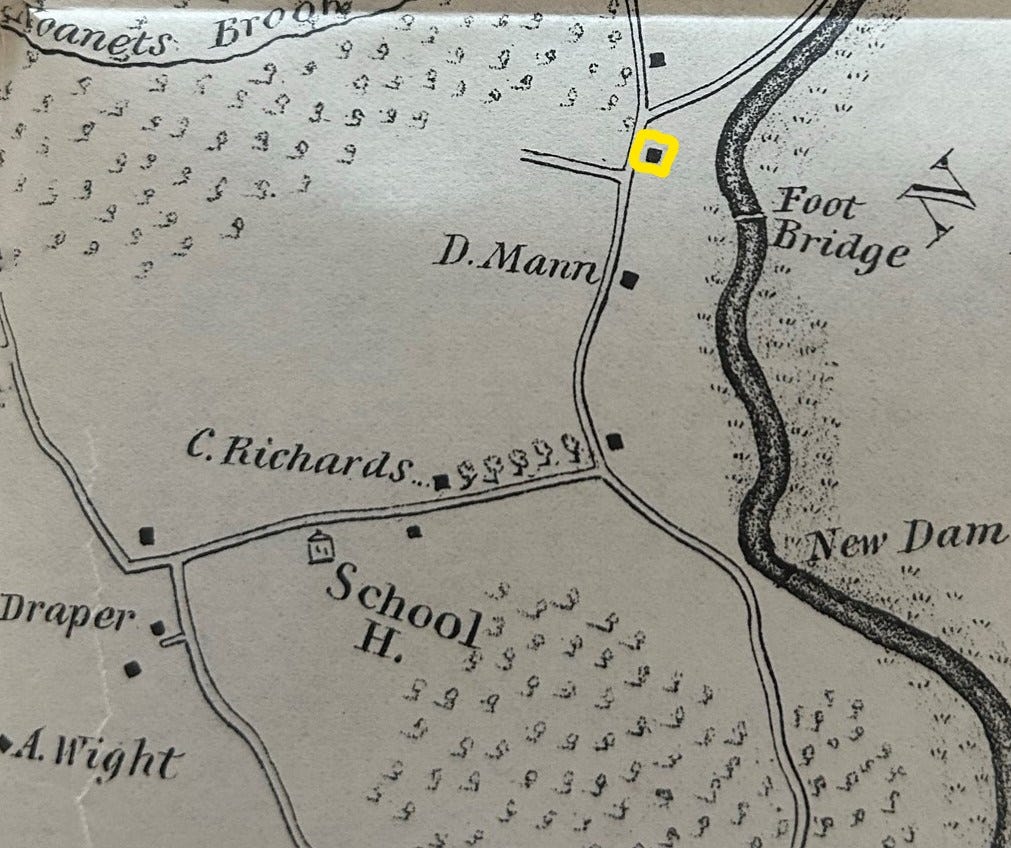
Henry Bodge kept the house for less than three years, selling it to Calvin Bigelow (1790-1872) on 22 Oct 18396. Born in Sherborn, Bigelow was a blacksmith by trade, specializing in the manufacturing of plows, and had first settled in Dover near the intersection of Springdale Avenue, Farm Street, and Main Street in 1815. An advertisement in the Boston Post suggests that Bigelow was attempting to sell his first shop several years before his purchase of the Ebenezer Richards property.
Bigelow farmed the Dedham Street property and maintained a blacksmith shop there until his death on 24 January 1872. Some six months later his heirs sold the property to Mary C. Humphrey and Helen L. Campbell, both of Boston7. The property changed hands seven times over the remainder of the 19th Century, ending up in the hands of Moses Williams of Brookline and Frederic S. Goodwin of Boston, who sold it on 14 December 1904 to Frederic Haines Curtiss.8 At that point, the property encompassed 40.75 acres.
Frederic H. Curtiss was a Boston banker and author of several genealogy and travel books. Born in Yonkers, New York in 1869, he was a Director and Chairman of the Federal Reserve Bank of Boston. Curtiss purchased the farm as a summer residence, spending the rest of the year at 63 Bay State Road in Boston, and on “Lolita”, a 43-foot steam yacht kept in East Boston. In 1909 Curtiss engaged the Boston architectural firm of Cummings & Howard to make renovations to his Dover home. As reported in the Boston Evening Transcript of 19 June 1909 the work included the relocation of the house (presumably just a slight repositioning given its location on the 1831 Map), a new foundation, and an unusual staircase that passes through the chimney (presumably allowing access to second-floor bedrooms without passing through other bedrooms).
At some point after 1923 another architectural firm, Kilham, Hopkins & Greeley was engaged to create a stone-wall enclosed garden that survives today. A small brick cottage just east of the house may have been added at this point as well. Both firms had local ties. Philip B. Howard of Cummings & Howard was a Dover resident and the firm had designed both the Dover Historical Society’s Sawin Memorial Building (1906) and the Caryl School (1910), while James Cleveland Hopkins of Kilham, Hopkins & Greeley, also a Dover resident, had designed the Town Hall (1922). Curtiss and his wife owned the house until his death in 1967.
In November of 1967, Frederic Curtiss’ executors sold the property to neighboring property owners Charles Francis Adams, Charles C. Cabot, and Charles C. Cabot, Jr. Less than a year later Adams and the Cabots sold the land on the north side of Dedham Street to Samuel & Joan King. King, a Boston attorney, would occupy the house for 19 years and raise his family there. In 1986 the property was sold to Dover Farms Development and the land on the north side of Dedham Street was subdivided into three lots. The middle lot, encompassing 2.71 acres and identified as 202 Dedham Street, was acquired by a local veterinarian who lived there until 2022.
As Richard Moe, former President of the National Trust for Historic Preservation, said
“When you strip away the rhetoric, preservation is simply having the good sense to hold on to things that are well designed, that link us with our past in a meaningful way, and that have plenty of good use left in them”.
We are fortunate in that the Ebenezer Richards House was recently acquired by new owners with an interest in its long history and a commitment to its stewardship.
Frank Smith, Dover Farms (Dover, Massachusetts, Published by the Dover Historical and Natural History Society, 1914) 73.
Suffolk County Registry of Deeds, Boston MA, Book 94 Page 189.
Frank Smith, Biographical Sketch of the residents of that part of Dedham, which is now Dover, who took part in King Philip’s War, the last French and Indian War, and the Revolution; Together with the record of the services of those Who represented Dover in the War of 1812; the War with Mexico; the Civil War; and the War with Spain (Dover, Massachusetts, Printed by the Town, 1909) 43.
Norfolk County Registry of Deeds, Dedham MA, Book 172 Page 189.
Norfolk County Registry of Deeds, Book 114 Page 208.
Norfolk County Registry of Deeds, Book 126 Page 309.
Norfolk County Registry of Deeds, Book 425 Page 482.
Norfolk County Registry of Deeds, Book 989 Page 276.

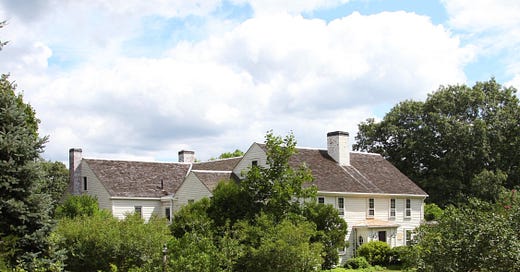


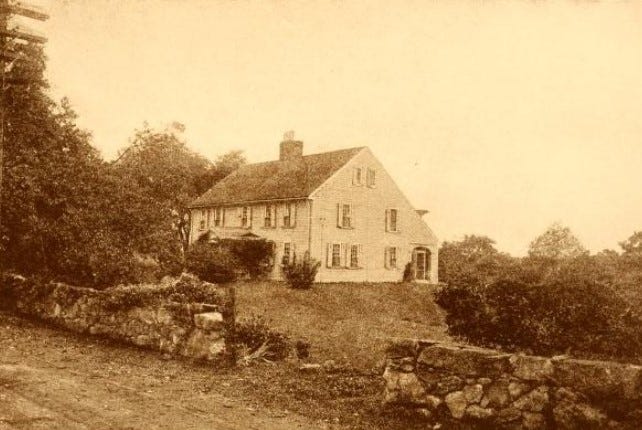
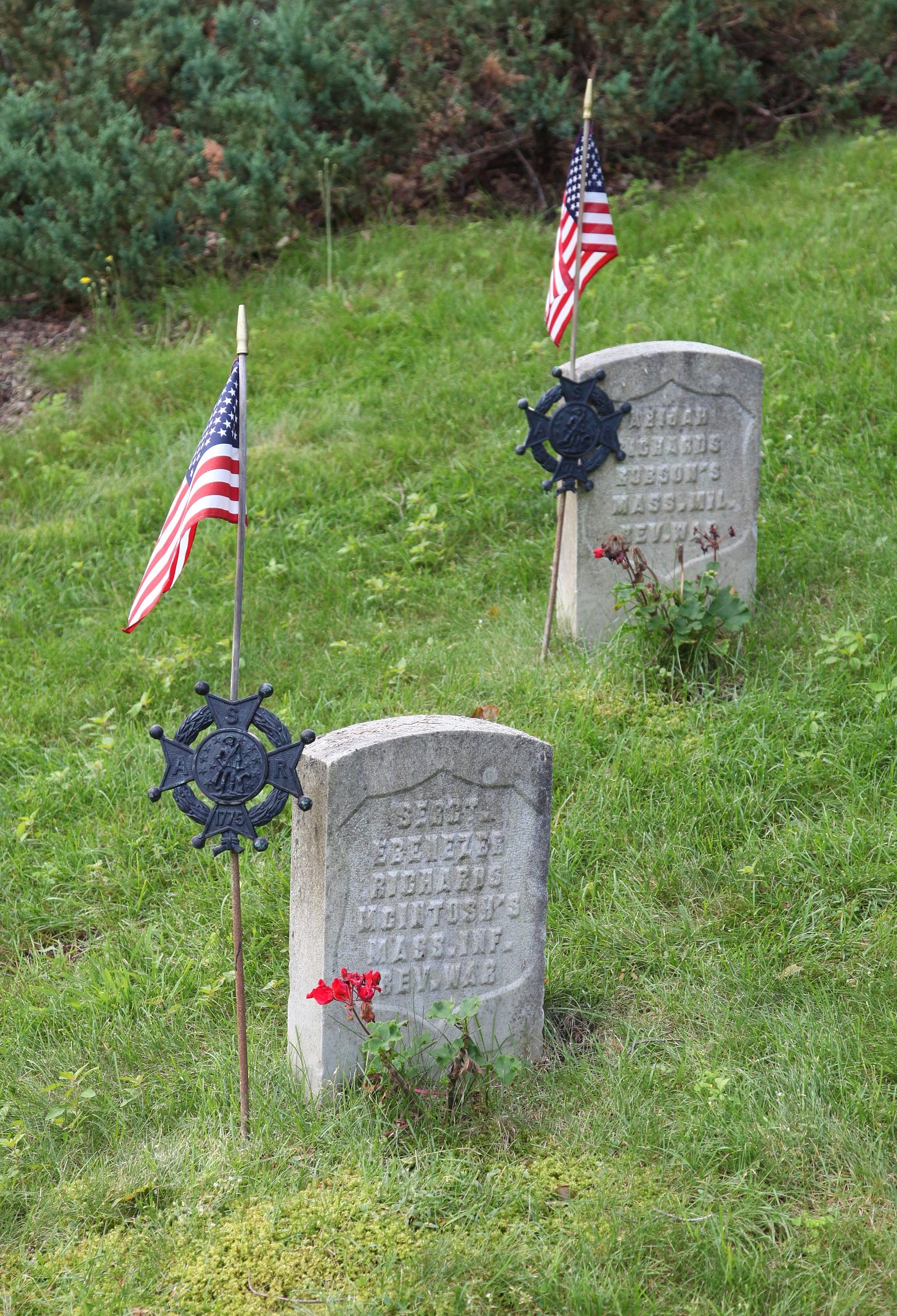

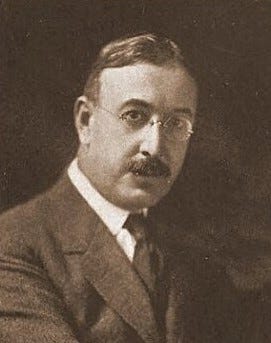
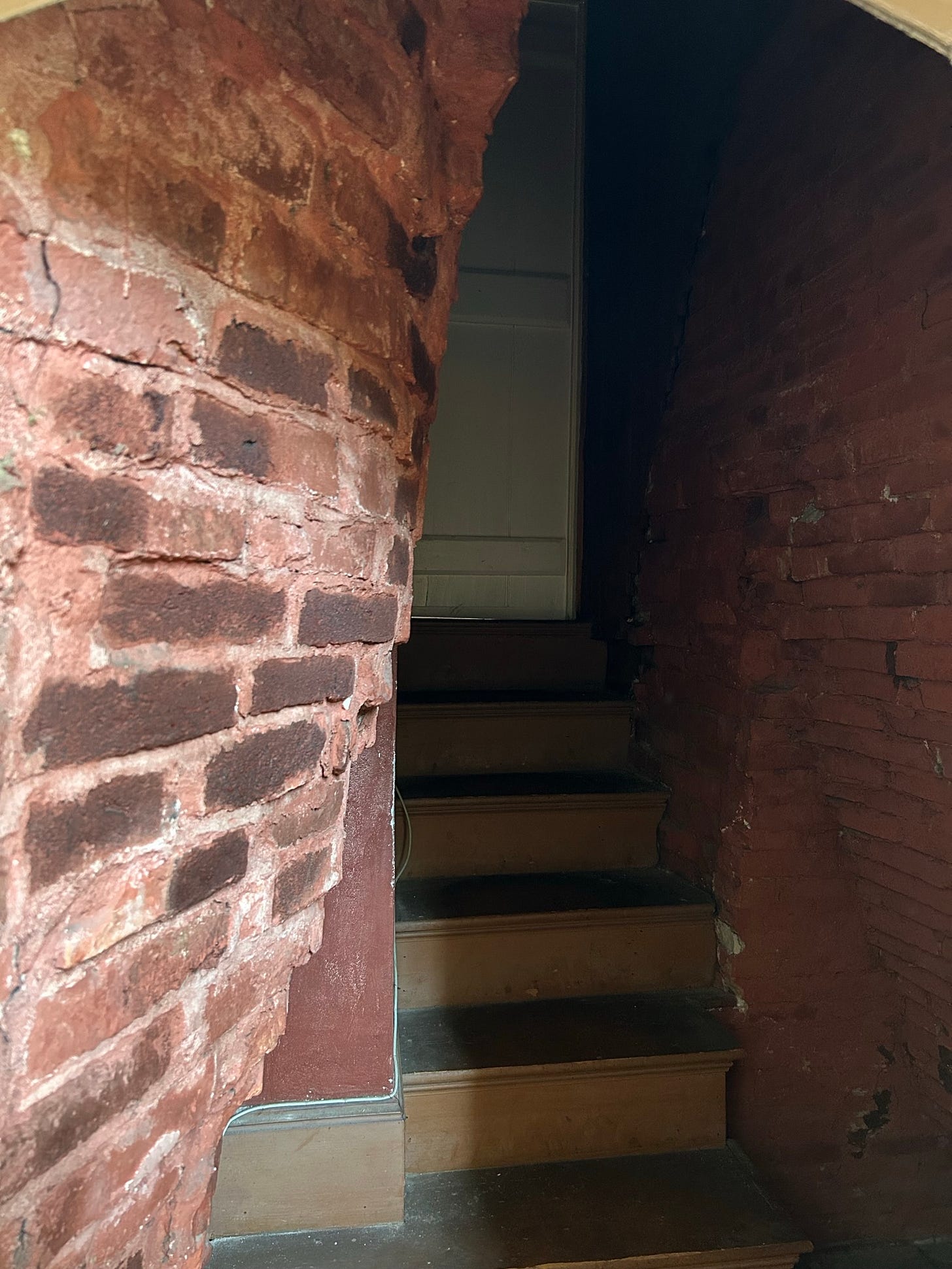
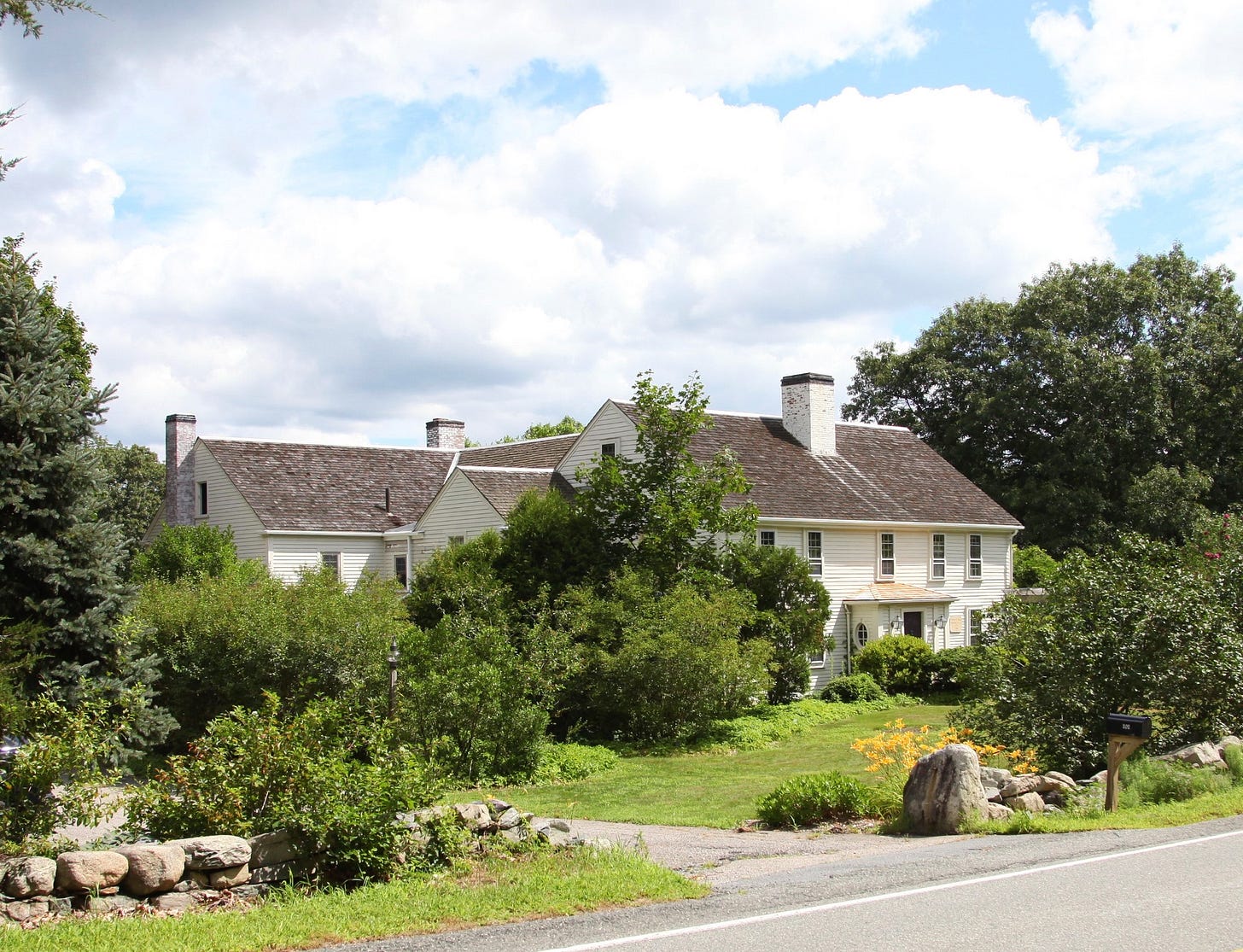
Great. Must have been fun tracking all the connections
interesting resd cuz. !